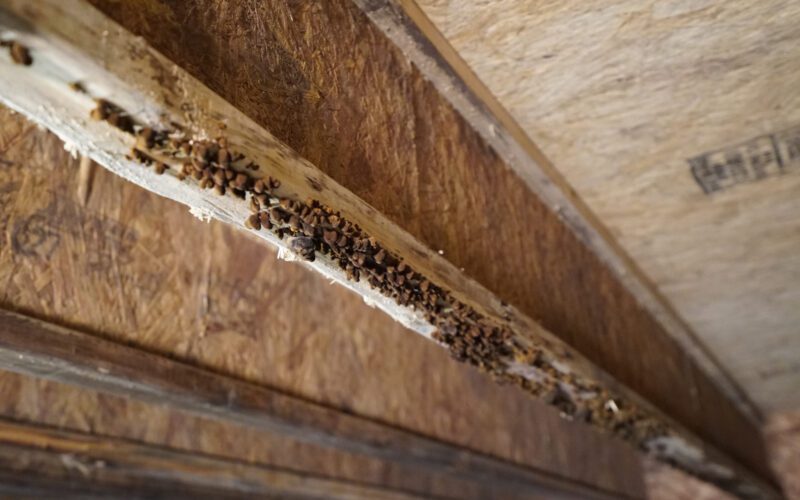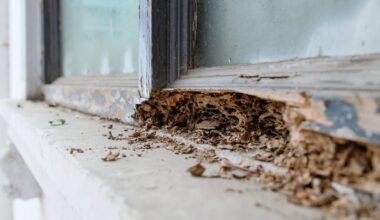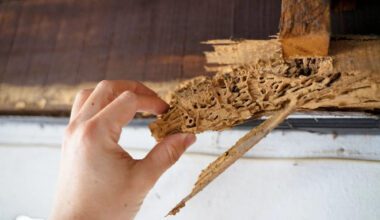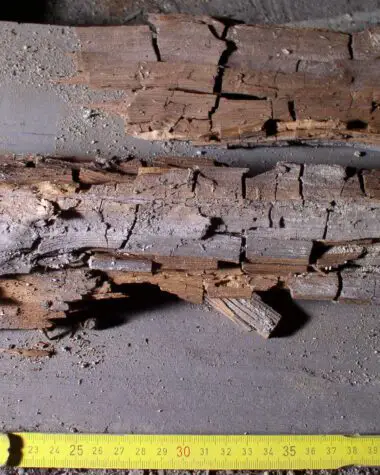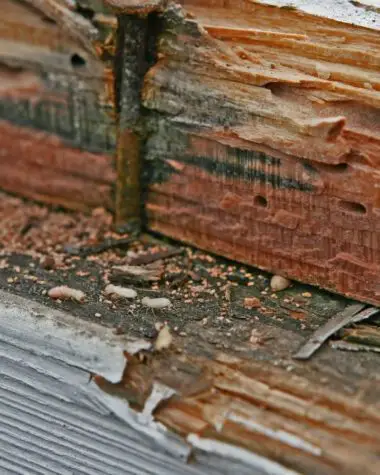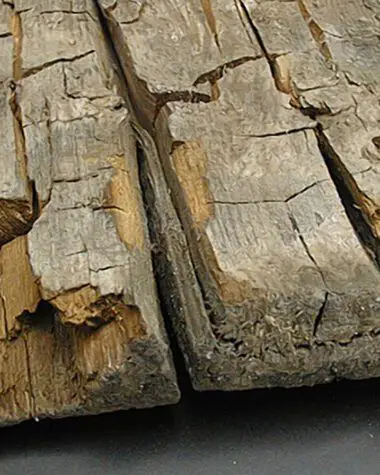Your property may be prone to wood infestation due to several factors that may seem minimal. You must remember that pests attack when your area is accessible and attractive to them. To avoid these pests, you must monitor and restrict certain conditions and access in your place.
Some causative agents of an infestation can be treated at home, while others need professional help. Here’s a list of factors that usually attract wood pests and a quick guide on how to treat them in order to prevent a wood infestation.
Factors That Lead to Wood Infestation
Wood infestation occurs in places with conditions that make them vulnerable to pest attacks. Here’s a list of factors that make your area prone to pest infestation.
Fungi
Certain amounts of wood-decaying fungi may be unnoticeable since the pores are extremely small. These fungi cause wood rotting, discoloration, and stains. Although discoloration and staining do not affect the wood’s endurance, they make it vulnerable to pest attack.
Wood structures and furniture infested with fungi become rot and moist, creating a humid space for wood-destroying insects. Also, fungi attack the cellulose or lignin of wood and destroy it. As the wood decays due to fungi, it gets soft and loses resistance.
The most common types of fungi that cause wood rotting are soft rot fungi, white rot fungi, and brown rot fungi. They can be easily identified by the characteristic of the damage they caused.
The best solution to avoid fungi is to keep your place dry or aerated since fungi only reproduce in humid environments. If fungi start growing on your wood, you can use chlorine bleach and warm water to eliminate them effectively.
Heat
The constant decrease and increase in heat can result in humidity and moisture problems in the wood. It can decrease wood’s mechanical resistance, causing it to swell or shrink until it creates cracks that can serve as entry holes for pests. Also, if the wood is exposed to high moisture levels, it will start to decay and attract more pests.
To avoid extreme heat changes, ensure that your wooden projects are stored in well-ventilated rooms. Frequently inspect and monitor confined spaces, to avoid or fix any heat-related problems.
Water and Humidity
When the wood quickly absorbs water and humidity, it will deteriorate in structure. The rotting will start, causing damage to the wood, softening it, and making it much easier for pests to feast. To prevent this problem, make sure you fix any leaks and stagnant water that can cause water and humidity problems in your wood structure and furniture.
UV Rays
UV rays destroy the wood’s lignin, the interior material that bonds tree cells. If the wood cells are not bonded well, it causes breaks and impairs the wood structure. When that happens, the wood will lose its resistance against the destroying effects of water that, eventually, lead to the wood’s vulnerability to pest attacks.
You can treat your wood with specialized coatings to avoid UV ray damage. Painting and applying varnish on your wood will build up a protective barrier that can reduce the amounts of UV that permeate through the wood.
Fire
Certain species of wood-destroying insects are attracted to freshly burned woods, where they deposit their eggs. Even a simple fire pit can lure pests into your area, and they can find a habitat in your wood structure.
The solution to this problem is to protect your wood from high temperatures by covering it with lime-based and clay coating or painting with flame-resistant varnish and dye. You can also enhance the fire resistance of your wood structure and furniture by injecting borate products and alum salt with chemical liquids into the wood.
Living Near Pest-Prone Area
Living in an area near the nests of insects can make your property prone to attacks and infestation. The pests can easily transfer to your area once they find it accessible and suitable for their survival.
If you are planning to purchase a property for your woodwork, the best option is to choose places far away from pest-prone areas. However, if you are living within these dangerous sites, you can apply these preventive measures to avoid infestation.
You can make traps to catch and reduce the number of pests trying to invade your home. Or, you can create chemical barriers like liquids and foams so the critters cannot pass through your area.
Having Infested Wood
Infestation usually starts after using raw wood materials that already contain the eggs or larvae of wood-destroying insects. They are often unnoticeable since most pests burrow their eggs in the interior of woods through tunnels or between tiny cracks. By some unlucky chance, you may use an infested wood without actually noticing it.
If you worry about this problem, you must ensure that you treat your wood first before using it as a material. You can apply a chemical-based treatment that can kill larvae and eggs from the interior and cover exit holes or the surface of the wood with varnish or paint.
Firewood
Firewoods are usually full of wood-destroying pests. They contain tiny eggs and larvae, which can be unnoticeable and spread easily to other wooden structures and furniture. To control a possible infestation, you must have separate storage for firewood, which is away from your wood structures and furniture. At least 20 feet away from your woodwork is recommended.
Improper Yard Maintenance
Having improper yard maintenance, especially when trees surround your property, is another common factor that can lead to pest infestation. Remember, wood-destroying insects are attracted to rotten and dead wood, including fallen branches, tree stumps, mulch, and dead leaves.
To keep your area safe from pest attacks, ensure your yard is properly cleaned and maintained. You must quickly dispose of any dead wood that can attract insects. Or, clean and replace any old mulch in your garden soil.
Conclusion
Pests attack accessible places that are suitable for their habitat. Most wood-destroying insects look for a humid environment, usually exposed to water leaks and moisture. They invade a property through entry holes, where they can easily sneak in. Along with it, other possible attractions can be food and other available resources vital for their survival.
The simplest and quickest way to prevent pest infestation is to ensure you avoid and monitor these contributing factors. Doing so makes your property and woodwork safe from pest attacks.
For more information and useful tips about the wood infestation, you can check out other related articles that can help. Also, you can look for professional help for a wood infestation inspection by following the necessary steps and processes when identifying a possible infestation.
